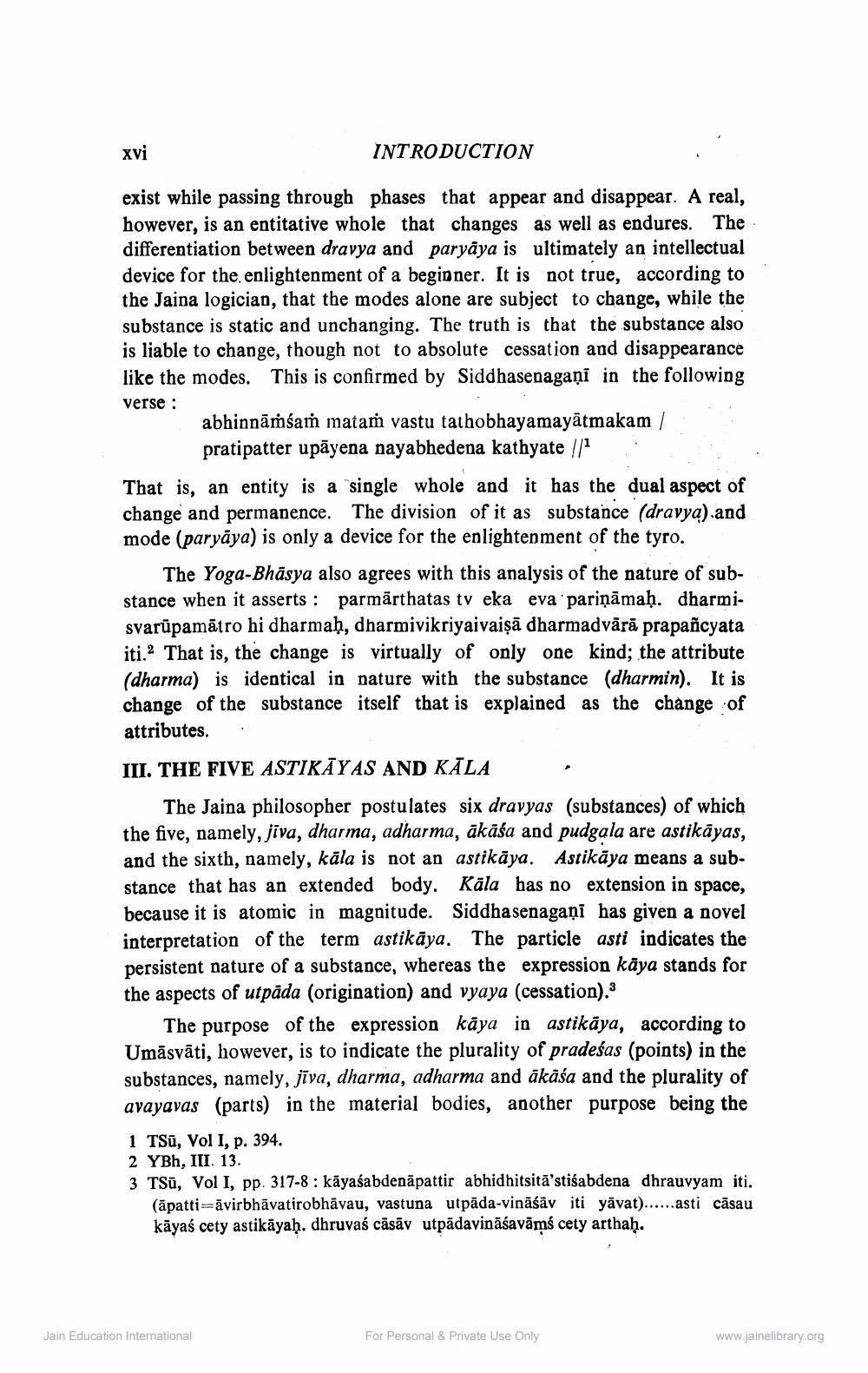________________
INTRODUCTION
exist while passing through phases that appear and disappear. A real, however, is an entitative whole that changes as well as endures. The differentiation between dravya and paryaya is ultimately an intellectual device for the enlightenment of a beginner. It is not true, according to the Jaina logician, that the modes alone are subject to change, while the substance is static and unchanging. The truth is that the substance also is liable to change, though not to absolute cessation and disappearance like the modes. This is confirmed by Siddhasenagaṇī in the following
verse:
xvi
abhinnāṁśaṁ matam vastu tathobhayamayatmakam / pratipatter upayena nayabhedena kathyate //1
That is, an entity is a single whole and it has the dual aspect of change and permanence. The division of it as substance (dravya).and mode (paryāya) is only a device for the enlightenment of the tyro.
The Yoga-Bhasya also agrees with this analysis of the nature of substance when it asserts: parmarthatas tv eka eva pariņāmaḥ. dharmisvarūpamātro hi dharmaḥ, dharmivikriyaivaiṣā dharmadvārā prapañcyata iti.2 That is, the change is virtually of only one kind; the attribute (dharma) is identical in nature with the substance (dharmin). It is change of the substance itself that is explained as the change of attributes.
III. THE FIVE ASTIKAYAS AND KĀLA
The Jaina philosopher postulates six dravyas (substances) of which the five, namely, jiva, dharma, adharma, ākāśa and pudgala are astikāyas, and the sixth, namely, kāla is not an astikāya. Astikāya means a substance that has an extended body. Kala has no extension in space, because it is atomic in magnitude. Siddha senagaṇī has given a novel interpretation of the term astikāya. The particle asti indicates the persistent nature of a substance, whereas the expression kaya stands for the aspects of utpāda (origination) and vyaya (cessation).3
The purpose of the expression kaya in astikāya, according to Umāsvāti, however, is to indicate the plurality of pradeśas (points) in the substances, namely, jiva, dharma, adharma and ākāśa and the plurality of avayavas (parts) in the material bodies, another purpose being the
1 TSũ, Vol I, p. 394.
2 YBh, III. 13.
3 TSū, Vol I, pp. 317-8: kāyaśabdenāpattir abhidhitsita'stiśabdena dhrauvyam iti. (apatti āvirbhāvatirobhāvau, vastuna utpada-vināśāv iti yavat)......asti casau kāyaś cety astikāyaḥ, dhruvaś cāsāv utpadavināśavāmś cety arthaḥ.
Jain Education International
For Personal & Private Use Only
www.jainelibrary.org




